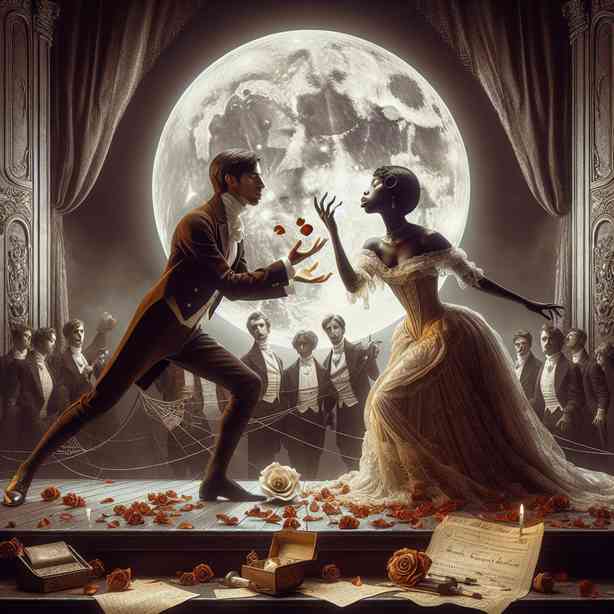
Doomed love stories have captivated audiences for centuries, weaving a rich tapestry of emotional intensity, tragedy, and human connection. These narratives often captivate us more than conventional love stories, leading us to wonder why we fall so easily for tales of love that seem destined for heartbreak. To delve into this phenomenon, we must explore various aspects: the psychological appeal of doomed romance, the cultural significance behind these stories, and the deeper emotional truths they often reveal about the human experience.
At the heart of our fascination with doomed love stories lies a profound psychological connection. Love, particularly in its early stages, triggers a mix of intense emotions—affection, longing, and excitement—coupled with an underlying fear of loss. This duality creates a compelling dynamic that resonates deeply within us. On one hand, we are drawn to the passion and intensity that accompany such relationships. On the other hand, the inevitable tragedy lurking in the narrative heightens the stakes, prompting a strong emotional investment from the audience. When we witness love that faces insurmountable odds, it serves as a reminder of the fragility of our own relationships, making these stories all the more poignant and relatable.
Moreover, the archetype of the star-crossed lover provides a rich ground for storytelling. Stories like Romeo and Juliet or Tristan and Isolde not only highlight the beauty and intensity of love but also the tragedy that often accompanies it. These narratives frequently involve societal pressures, familial conflicts, or personal sacrifices, which heighten the tension and emotional stakes. The pull between love and fate becomes central to the story, compelling us to root for the characters despite knowing their inevitable fate. It raises existential questions, encouraging us to ponder concepts of destiny, free will, and the choices we make in our relationships.
Culturally, doomed love stories resonate because they often reflect the societal issues of their time. They can act as a critique of social norms, addressing themes of class disparity, family expectations, or cultural conflicts. For instance, in stories like The Fault in Our Stars, the looming presence of illness adds a layer of existential reflection. Through the lens of love, these narratives confront our fear of mortality and the transient nature of life, prompting us to appreciate the moments we have with loved ones. The tragic outcomes serve not only to highlight the depth of the characters’ feelings but also to evoke empathy and compassion in the audience, reinforcing the idea that love, even when it is fleeting, is a powerful and transformative experience.
Furthermore, the emotional catharsis provided by these narratives should not be underestimated. Engaging with stories of doomed love allows us to confront our own emotions in a safe space. As we observe characters face their trials, we may find parallels in our own lives—the heartbreak, yearning, and sacrifices that love often entails. This emotional release can be comforting, allowing us to explore our feelings of loss and longing without the real-world consequences. Thus, the act of engaging with doomed love stories becomes a journey of self-reflection, leading us to better understand our own hearts.
The striking imagery often found in these stories enhances their appeal as well. The visual and metaphorical components associated with doomed love—rain-soaked farewells, quiet moments of connection amid chaos, and the profound weight of unspoken words—create a vivid landscape that lingers in our minds. Filmmakers and authors often employ rich symbolism to convey the emotional depth of these relationships. This artistry captures not only the essence of passion but also the poignant elements of loss and longing, inviting viewers and readers into a world that feels both beautiful and tragically ephemeral.
In the realm of art and literature, these doomed love stories often provide commentary on the human condition. They confront complex themes such as identity, belonging, and the pursuit of happiness. Through the lens of lost love, they reflect our struggles, desires, and the inherent complexities of life itself. This thematic depth is perhaps why we resonate so strongly with these narratives, as they echo our own experiences of joy and pain, love and loss.
In conclusion, our collective fascination with doomed love stories can be attributed to the intricate interplay of emotion, culture, and artistic expression. These narratives capture the essence of what it means to love deeply while navigating the chaos and uncertainties of life. By immersing ourselves in stories that reflect both the beauty and tragedy of love, we find a mirror for our own emotions and experiences, allowing us to process the complexities of human connection. As we continue to engage with these tales, we are reminded that love, in all its forms, is a powerful force—an elixir that can bring both profound joy and devastating heartache. Embracing the fullness of these narratives can lead us to a deeper understanding of ourselves and our relationships, making doomed love stories an integral part of the human experience.


